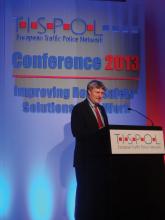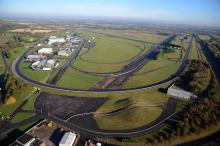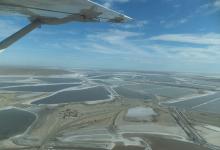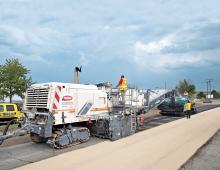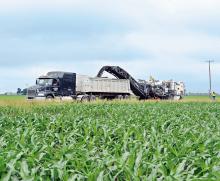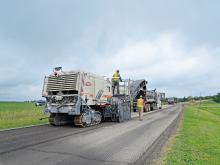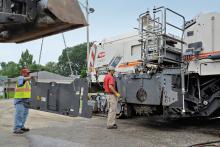MIRA in central England has begun a huge redevelopment of its 830 acre site that will see the renowned centre for transport technologies expand its capabilities while, at the same time, create the largest transport research and development technology park in Europe. Guy Woodford reports This is all very impressive,” said Deputy Prime Minister Nick Clegg in April 2011 on hearing a presentation of MIRA’s ambitious expansion plans. As succinct appraisals go, Clegg’s view of MIRA’s plans to develop its brand of
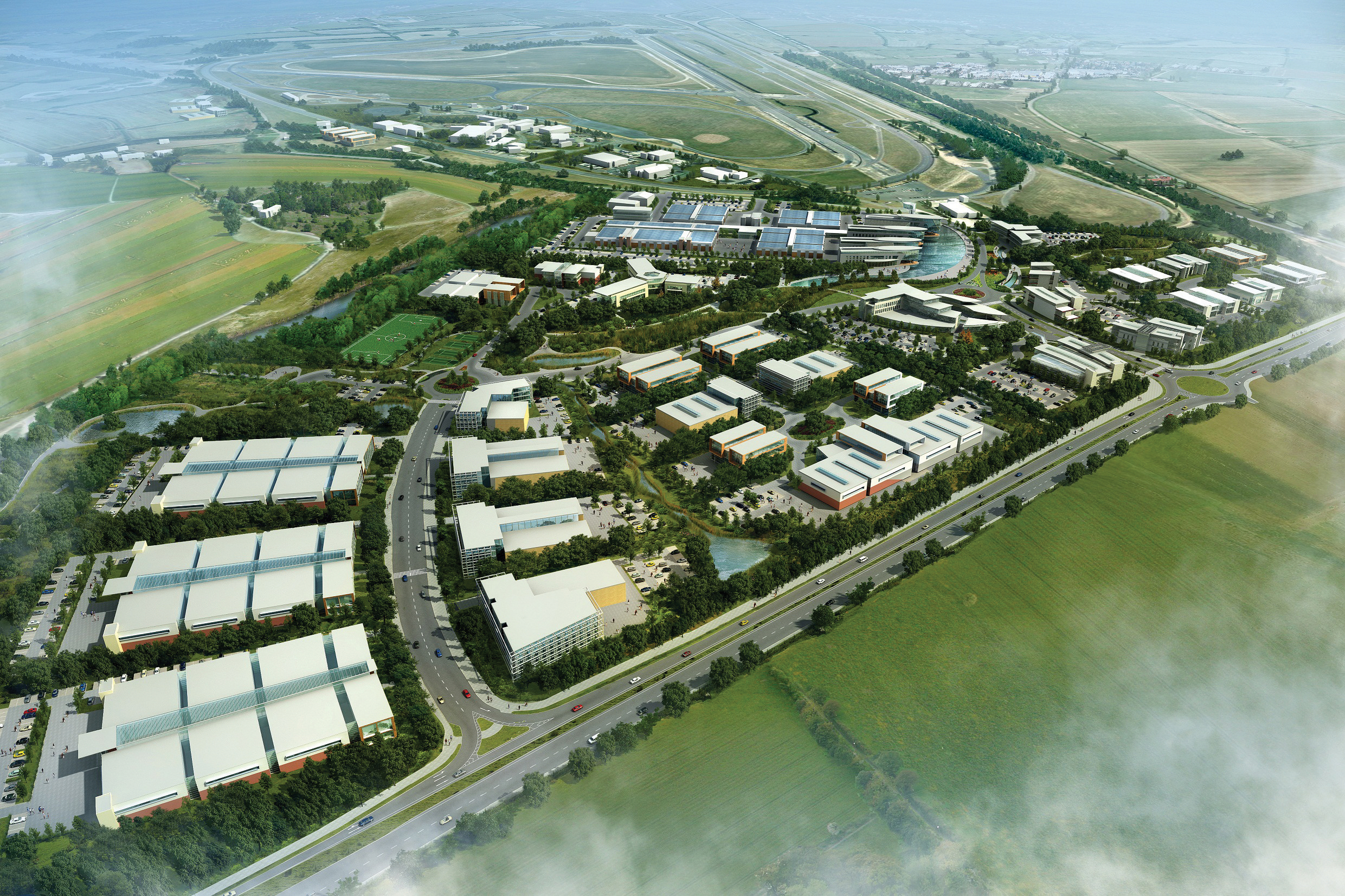
Computer Generated Images (CGI) of the expanded MIRA Technology Park
MIRA in central England has begun a huge redevelopment of its 830 acre site that will see the renowned centre for transport technologies expand its capabilities while, at the same time, create the largest transport research and development technology park in Europe. Guy Woodford reports
This is all very impressive,” said Deputy Prime Minister Nick Clegg in April 2011 on hearing a presentation ofAs succinct appraisals go, Clegg’s view of MIRA’s plans to develop its brand of engineering excellence and worldwide industry status is hard to beat.
Fuelled by €385.52 million (£300 million) of private sector funding up until 2021, MIRA will create Europe’s biggest engineering research and development technology park (MTP), set to attract some of the biggest names in the automotive, defence, aerospace, and rail industries.
Last year’s Government award of Enterprise Zone status for MIRA means that leading engineering-related businesses will have a number of key incentives to attract them to the technology park including an exemption from business rates, the benefit of expedited planning approval process, and access to superfast broadband.
MIRA is also thought to be one of the potential sites for a national Future Transport Systems and Intelligent Mobility Catapult centre (the new name for Transport Innovation Centres or TICs) that would meet Technology Strategy Board (TSB) targets while tapping into €12.85 million (£10 million) of public sector investments already made in innovITS Advance. The Government aims to have a Catapult centre up and running by 2013.
An executive non-department public body created by the Government in 2007, the TSB is funded by the Department for Business, Innovation & Skills. Marketed as a futuristic research and development centre to be based in the UK, innovITS Advance will enable clients from the telecommunications, automotive and electronics industries, as well as highways authorities and operators, to develop, test and validate future transport technologies in a safe and highly controlled environment.
According to MIRA, the huge expansion of the existing MTP will create 2,000 direct new jobs with many positions set to be filled by local people, including graduates from nearby universities such as Warwick, Loughborough and Birmingham.
As part of a Green Travel Plan negotiated with local authorities, there will be a cycle path between an expanded MTP and Nuneaton train station. A MIRA onsite bus station will also provide bus services to Nuneaton station.
The MIRA expansion will also result in the upgrade of the crucial A5 highway running parallel to the MIRA site which will, crucially, reduce commerce related travel time and costs for the wider business community.
Other new job creating facilities in the MIRA redevelopment will include a small convenience retail outlet, a hotel, and a health club.
“The MIRA Technology Park represents a pivotal movement in our 67 year history and it will ensure MIRA’s unprecedented period of growth continues into the next decade,” said MIRA’s chief executive Dr George Gillespie. “One of the core aims of the MIRA Technology Park is to help attract inward investment from international transportation sector businesses, boosting jobs and benefitting local businesses. This investment will help turn the international spotlight on UK engineering and the UK as an ideal location within Europe for transportation R&D activities.
“MIRA Technology Park will result in the creation of thousands of jobs within the Midlands. The faster generation of jobs for our locality and beyond through the supply chain is a priceless opportunity for our region in the current climate and we’re looking forward to welcoming our first tenants of this new phase of MTP later this year.”
The continuing execution of MIRA’s expansion plan is being built on great success in 2011. MIRA achieved a third successive year of record turnover – with a 12% rise to €53.97 million (£42 million).
Among the company’s business areas in highest demand were its functional safety offer, said by MIRA to ensure that complex software and firmware systems providing safety critical functions within a vehicle satisfy increasingly tough performance targets.
Last year MIRA launched the UK’s first dedicated environmental test facility for new generation Li-on battery packs being used on electrical and hybrid vehicles. Due to client demand, a second facility was opened before the end of 2011.
Meanwhile MIRA’s crash laboratory, said to be home to the largest passive safety test facility and engineering team in Britain, last year secured a contract with TRL to provide the UK’s Euro NCAP crash test services.
Gillespie said aggressive investments and product developments from some of the world’s major vehicle manufacturers, allied to vehicle sales growth in China, Brazil and India, resulted in big business for MIRA.
“We saw our highest order intake from China and Korea for many years in 2011,” said MIRA’s chief executive. “We also cemented MIRA’s reputation for advanced Unmanned Ground Vehicle (UGV) solutions by delivering a technically innovative fleet of UGVs to the UK Ministry of Defence.”
The substantial estimated revenues generated by the completed MIRA Technology Park, which currently houses 30 automotive companies including
MIRA already offers full vehicle systems engineering and integration, test, development, validation and certification expertise. This includes everything from vehicle concept design through to post start of production (SOP) support.
The company also boasts highly respected expertise in BIW and chassis engineering, low carbon technologies, ITS, electronics, control and functional safety.
Terry Spall, MIRA commercial director, emphasised how MIRA’s expansion plans were being built on longstanding achievement.
“MIRA already has test tracks, 35 major laboratories and 500 engineers. If you look back three years our revenue was £28 million (€35.98 million), now its £46 million (€59.11 million),” said Spall.
“MIRA’s existing technology park has been 98% occupied for the last five years. The continuing expansion of the technology park is taking us from being not only a provider of engineering services, to also being more of a home for major companies.
“We have plans in place to see MIRA revenue in excess of £75 million (€96.38 million) a year by around 2015, with a sustainable and achievable target of £100 million (€128.50 million) a few years after that.”
“MIRA is an interesting business as we are not-for-profit run with no shareholders. All money [currently] generated is invested back into the business. We are looking to make MIRA more of an investment proposition so we can generate essential working capital to further accelerate growth.”
Spall said that despite MIRA having operations/representation in major trading countries such as China, Japan, Malaysia, and South Korea, 83% of its current revenues are UK generated. But last year’s establishment of a new MIRA joint venture in Pune, near Mumbai, India, and the awarding of Wholly Foreign Owned Enterprise (WFOE) status for MIRA’s Shanghai, China, base highlight the company’s eagerness to develop its global reputation for engineering excellence.
“The WFOE status means that MIRA can employ directly and do engineering work in China and trade in Renminbi. Most of our business there is with major engineering manufacturers. WFOE status is not easy to get.”
Far closer to home, Spall said he and the rest of the MIRA management team had been heartened by the response of residents and businesses in the towns and villages surrounding MIRA’s UK HQ.
“When we went public with our expansion plans about two years ago, we held exhibitions in four local communities (Higham on the Hill, Hinckley, Nuneaton, and Atherstone). The MIRA site is in the countryside, which people are very emotive about. However, people had seen what MIRA had done and wanted to see it grow. Of those who responded to a MIRA survey during the public exhibitions, 98.8% supported our plans.”
Dave Havergill, MIRA senior manager for engineering and programme management, said the appointment of new management at MIRA in 2009 had been the catalyst for the company’s expansion plans.
“In the last three years we’ve begun to reach the potential of the place. The business engineering part of MIRA has thrived. However, we need profitability to go up to allow us to transform the services we can offer.”
Havergill said there were some “very key” blue chip vehicle transport-related companies in “detailed discussions” with MIRA about creating a base at the expanded MTP. He said he could not reveal more details at this stage.
The MIRA engineering boss is also excited about some of the new engineering projects currently being undertaken at UK HQ.
“On the intelligent transport and systems side, we’ve done quite a lot of work on autonomous drive vehicles and we plan to have something to show soon.”
| TIMELINE | MIRA: The key facts |
|---|---|
| 2011: Masterplan completed, planning approval, Enterprise Zone designation awarded, Regional Growth Fund grant for public infrastructure, global marketing programme begins 2012: First occupiers conceptual designs and commercial agreements, detail designs in progress and local development order in place. Principal investors on board 2013: Initiate key off-site infrastructure up gradation, phase 1 of on-site infrastructure, start of construction for first occupier buildings 2014: First occupiers take possession, completion of phase 1 of on-site infrastructure, off-site infrastructure completed 2021: Development fully completed | • Established in 1946 by UK Government and Industry – independent since 1975 • World renowned vehicle engineering and testing business • 540 staff; 75% engineers and technicians • 830 acre site • 93km (58 mile) proving ground facility • 35+major facilities including: - Wind tunnels - Crash and safety systems test labs - Electric magnetic compatibility chambers - Climatic & Environmental testing - Electric vehicle battery testing - Noise vibration harshness and dynamics test labs • Profits reinvested in research, facilities and services |

